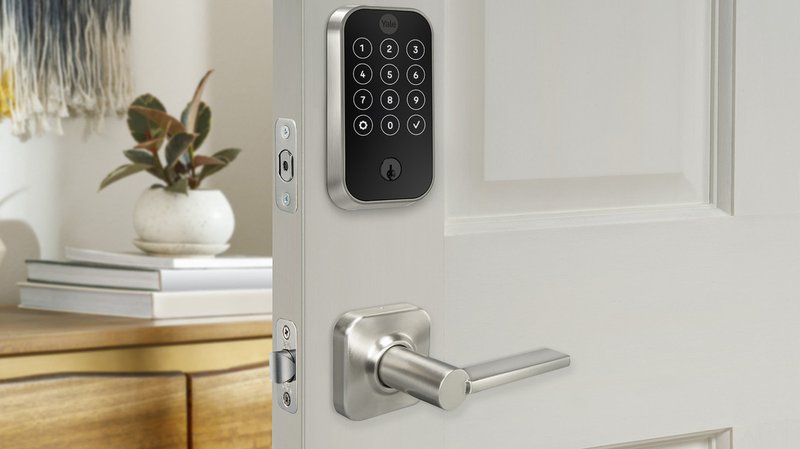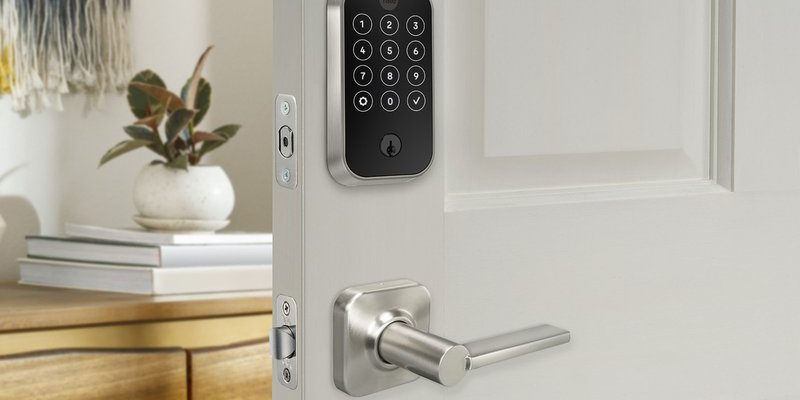
Every smart lock brand has its own quirks and update process. Some are as easy as tapping a button on your phone, while others feel more like trying to teach an old dog new tricks. If you’ve ever wondered, “Am I doing this right?” or worried you might accidentally reset your settings, you’re not alone. Let’s walk through the best firmware update procedures for popular brands, so you can approach your next update with total confidence.
Why Firmware Updates Matter for Smart Locks
Here’s the thing: smart locks rely on firmware (basically, built-in software that runs the lock) to do everything from recognizing your remote commands to syncing with your smart home system. Firmware is what tells the lock how to respond to your pin code, pair with your phone, and even manage its own battery usage.
When manufacturers release new firmware, it’s usually because they’ve discovered ways to make the lock safer or more reliable. Sometimes, it’s about closing up security loopholes that hackers could exploit. Other times, it’s about squashing bugs that users have reported—like doors not unlocking the first time or the battery indicator acting weird. If you skip updates, you’re leaving yourself exposed to problems that others have already solved.
You might be wondering: what’s the worst that could happen if you don’t update? Well, outdated firmware can make your lock easier to hack, cause annoying sync issues, or just plain stop new features from working. That’s why taking a few minutes to run a firmware update is one of the smartest things you can do for your home security.
August Smart Lock: Step-By-Step Update Guide
August is one of the most popular names in smart locks, and they’ve made the update process straightforward—if you know where to look. To make sure your August lock is up to date, you’ll need your smartphone, the August app, and a little patience. Here’s how you do it:
- Open the August app on your smartphone and tap the gear icon to access lock settings.
- Scroll until you see Firmware Version. If there’s an update available, you’ll see a prompt.
- Follow the on-screen instructions to start the update. Usually, this means keeping your phone near the lock and not shutting off Bluetooth or Wi-Fi.
- The lock will beep or show a light pattern when the process is done. If the lock loses connection during the update, don’t panic. Restart the app and try again.
Honestly, the longest part is waiting for the download. The tricky bit? If your phone goes to sleep or drifts too far from the lock, the process might fail. So, just hang out nearby, maybe with a cup of coffee. If anything goes wrong—say, the lock won’t respond or starts acting up—run a quick reset or check August’s troubleshooting tips in the app.
“Updating August’s firmware is like updating your phone: it’s quick, but you need to babysit it for a few minutes so nothing goes wrong.”
Schlage Encode: Wireless Update Process
Schlage’s Encode series stands out because it connects directly to your Wi-Fi—so you don’t have to fiddle with Bluetooth or special hubs. The company rolls out new firmware regularly to improve code security and make syncing with remotes even smoother. Here’s how updates typically work:
- Install the Schlage Home app on your phone and connect your lock to Wi-Fi.
- You’ll get a notification when a firmware update is available. If you don’t see it, check the lock’s settings inside the app.
- Tap Update and keep your phone and lock on the same Wi-Fi network during the process. The update should take a few minutes.
- If the update stalls or fails, Schlage recommends restarting your router or resetting the lock’s network connection before trying again.
Let me explain: because Schlage updates are wirelessly delivered, you don’t need to worry about physical cables or buttons. But if your Wi-Fi signal is weak near the door, the update might fail or pause. Make sure the lock isn’t too far from your router, and check the battery life—low battery can interrupt the process and even require a full reset if things go sideways.
If you’re stuck, resync the lock in the app, double-check your Wi-Fi, and try again. Schlage’s support site has step-by-step troubleshooting for stubborn cases.
Yale Assure: Bluetooth & App-Based Firmware Updates
Yale Assure locks have a reputation for reliability, but their firmware update process does need a bit more attention. Depending on your model, you’ll use either Bluetooth or a Yale smart module to connect. Here’s the usual routine:
- Launch the Yale Access app and sign in to your account.
- If your lock is eligible for a firmware update, the app will flash a banner or send a push notification.
- For Bluetooth models, you’ll need to stand right next to the lock—Bluetooth doesn’t have much range, so don’t wander off.
- Keep the app open during the update. If the update fails, Yale recommends removing and re-adding the lock to the app, or running a soft reset.
One thing that trips people up: Yale firmware updates can sometimes take 10 minutes or more. You might hear a series of beeps or see lights flash while the lock reboots. Don’t interrupt the process—wait until the app tells you it’s finished. If your lock stops responding afterward, check the battery level or run a reset.
Updates usually add better support for remotes, new sync options, or even improve battery management. That’s why keeping up with firmware can make your lock last longer between charges.
Kwikset Halo & Aura: Cloud-Based Update Procedure
With Kwikset smart locks—especially the Halo and Aura lines—firmware updates roll out over the cloud. What’s nice here is that the lock talks directly to Kwikset’s servers through the app, so you’re always getting the latest code as soon as it’s available.
- Download the Kwikset app and sign in to your account.
- Go to the device settings for your lock.
- If a firmware update is ready, you’ll see an Update button. Tap it, and make sure your phone stays connected to Wi-Fi and near the lock.
- The app walks you through the process, including any troubleshooting if the update fails—like checking the battery or restarting the lock.
Here’s the catch: Halo locks update via Wi-Fi, while Aura models use Bluetooth. So, if you’re not sure why an update isn’t working, check which model you have and what connection it needs. If your lock doesn’t respond after updating, try a quick reset or re-pair it in the app.
Most of the time, updates bring extra features for pairing remotes, better sync reliability, and battery tweaks. If you haven’t updated in a while, you might even get new code options that weren’t there before.
Level Lock: Ultra-Simple Over-the-Air Updates
Level Lock keeps things as simple as possible—if you have the Level app, updates are mostly automatic. Still, you can manually check for updates and make sure you’re always running the safest firmware.
- Open the Level app and tap your lock to open its settings.
- If an update’s available, the app lets you know. Tap Update Firmware and keep your phone close during the process.
- Don’t close the app or walk away—firmware updates can pause or stop if the connection drops.
Where Level stands out is in how quiet and seamless its updates feel. No loud beeping, no blinking lights—just a couple of progress bars in the app. If you hit any snags, Level’s troubleshooting tips are easy to find in the app, or you can reset the lock by following the steps under Settings.
Honestly, Level’s simple approach means there’s less that can go wrong. If you ever feel stuck, a quick battery check and a restart are usually all you need.
Tips for Troubleshooting Firmware Update Issues
Sometimes, even if you follow all the steps, a firmware update just won’t cooperate. Maybe the lock gets stuck syncing, or the app freezes halfway through. Here are a few common fixes that work across most brands:
- Check the battery: Low battery can stop an update mid-way or even “brick” the lock temporarily. Fresh batteries work wonders.
- Stay close to the lock: Bluetooth-based updates need your phone nearby. Don’t walk away while the update is running.
- Restart the app and lock: Sometimes, all it takes is restarting the app or removing/reinserting a battery to unfreeze a stuck update.
- Reset and re-pair: If nothing else works, reset the lock to factory settings, then pair it again and try the update one more time.
“In my experience, nine times out of ten, update problems come from weak connections or tired batteries. Don’t overthink it—the basics usually fix everything.”
If you’re still stuck, browse the brand’s official support site for up-to-date troubleshooting code. Sometimes, newer firmware will require you to pair a compatible remote or reset older settings before things work smoothly.
Comparing Universal and Brand-Specific Update Procedures
You might hear about “universal” smart lock remotes or third-party update tools. While the idea sounds tempting, most smart locks work best with their brand’s own app and update process. Universal remotes can sometimes let you pair or unlock your device, but they rarely handle firmware updates—and attempting to sync with unofficial tools might even void your warranty.
Brand-specific firmware updates are designed to check compatibility, avoid code conflicts, and make sure your settings don’t get reset unexpectedly. They also provide step-by-step troubleshooting if an update fails, which you usually won’t get with a universal remote.
If you value features like advanced battery monitoring, remote unlock, and easy code updates, stick with the official app. That way, you get new features, better security, and far less hassle if something goes wrong.
Keeping Your Smart Lock Secure and Reliable
So, what’s the bottom line? Keeping your smart lock’s firmware updated isn’t just a “nice to have”—it’s key to security and reliability. When you follow the best update procedure for your specific brand, you’re making sure your lock stays compatible with the latest remotes, runs the newest codes, and doesn’t lose track of your settings.
No matter which smart lock you own—August, Schlage, Yale, Kwikset, or Level—the process is always easier if you use the official app, keep your phone close, and don’t rush through the steps. If an update acts up, check the basics: battery, connection, and app version. Most problems can be solved with a little patience and a quick reset.
Keeping up with firmware might seem like just another chore, but in the world of smart security, it’s one of the simplest, smartest habits you can have.
